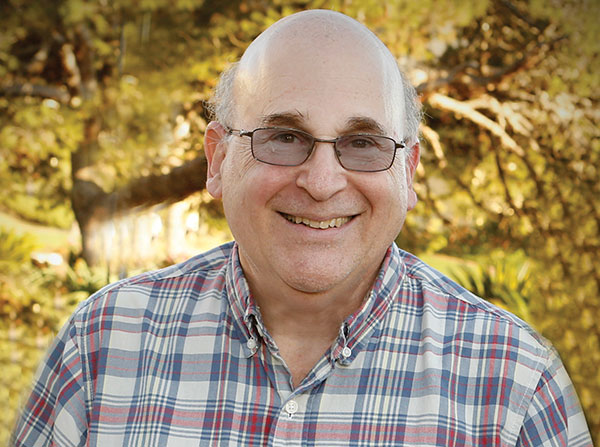
Paul Aisen, MD, the founding director of the USC Alzheimer’s Therapeutic Research Institute / Photo by Steve Cohn
Paul Aisen, MD, the founding director of the USC Alzheimer’s Therapeutic Research Institute, is the newest member of the Keck School of Medicine of USC whose focus is Alzheimer’s disease research. He recently spoke with us and answered a few questions about joining the Keck School and the progress of Alzheimer’s disease research over the last 25 years.
What excites you about joining the faculty at the Keck School of Medicine of USC?
I think Keck is the perfect home for my research group. We have enjoyed terrific support at all levels, allowing us to get our studies running in record time. And the academic environment is likewise terrific, as we build collaborations with outstanding leaders in Alzheimer’s disease research, including Arthur Toga, Paul Thompson and Helena Chui.
There is already a significant amount of Alzheimer’s disease-related research going on at Keck Medicine through the Alzheimer’s Disease Research Center, USC Stevens Institute of Neuroimaging and Neuroinformatics and the Zilkha Neurogenetic Institute. How do you think the Alzheimer’s Therapeutic Research Institute (ATRI) fits into that landscape?
ATRI’s mission is to accelerate the development of effective treatments for Alzheimer’s disease. We work on new methods (trial designs, outcome measures, analytical approaches), and design and implement multicenter trials. We look forward to collaboration with all of the research groups at the Keck School — all will contribute to our therapeutic studies.
Take us back to the early days of your career when you decided to pursue research on Alzheimer’s disease. What was like to be involved in Alzheimer’s research then?
I think I was very fortunate to enter academic medicine just as the field of Alzheimer’s therapeutic research was beginning. I had the opportunity to participate in the earliest studies, contributing to the development of the first drugs to be approved for the disease. Over the past 25 years, I have worked with remarkable investigators around the world on setting the stage for a new generation of therapies that we hope will bring this terrible disease under control. I don’t think there is any more important or more exciting work in medicine.
What changes have been most beneficial to advancing research?
The important advances are too many to name. But let me focus on one area: PET imaging. There are two primary abnormalities in the Alzheimer’s disease brain: plaques, made of aggregated protein called amyloid, and tangles, deposits within brain cells made up of a protein called tau. For the past 10 years, we have been able to study the accumulation of amyloid plaques in the brain using PET scans. This changed our entire perspective on the disease, and revolutionized drug development. We now know that amyloid, the root cause of the disease, accumulates 15 years before the onset of symptoms of Alzheimer’s disease. So we are now conducting our anti-amyloid trials during this asymptomatic phase when removal of amyloid is likely to be very effective. For the past two years, we have been able to visualize tangles as well, with a different type of PET scanning. With these two neuroimaging tools, we can analyze the course of the disease as never before, allowing accurate diagnosis very, very early, and enabling the accurate tracking of disease progression.
You have been quoted recently saying that you think there is reason for optimism for patients with Alzheimer’s disease. What do you see on the horizon that gives you hope?
With our new neuroimaging tools, and very promising therapeutic agents, I am confident that we will have effective treatments within the coming years. Ultimately, I believe we will be able to screen people in mid-life for evidence of amyloid dysregulation, so that we can administer treatments to prevent the accumulation of amyloid in brain, just as we treat elevated cholesterol to prevent the accumulation of plaques in arteries. We will be able to change the course of the most feared disease of aging.
by Hope Hamashige